
General American's TankTrain system of interconnecting tank cars provides
shippers with a quick and cost-effective method of moving large volumes
of bulk liquids. The TankTrain system consists of an entire string of cars
that can be loaded or unloaded from a single System connection. The last
car in each set (of 12 cars) is left 3/4 full. Then nitrogen gas (non-flammable,
non-toxic) is used to purge the loading lines of any remaining oil which
fills the last car.
Capacity (gal.) Car Type Sample Commodities
14,500 GS, Acid Phosphoric Acid
20,000 Exterior Coiled Fuel Oil, Crude Oil
26,000 Coiled, Non-Coiled Various chemicals
30,000 Non-Coiled Gasoline
33,500 High Pressure LPG
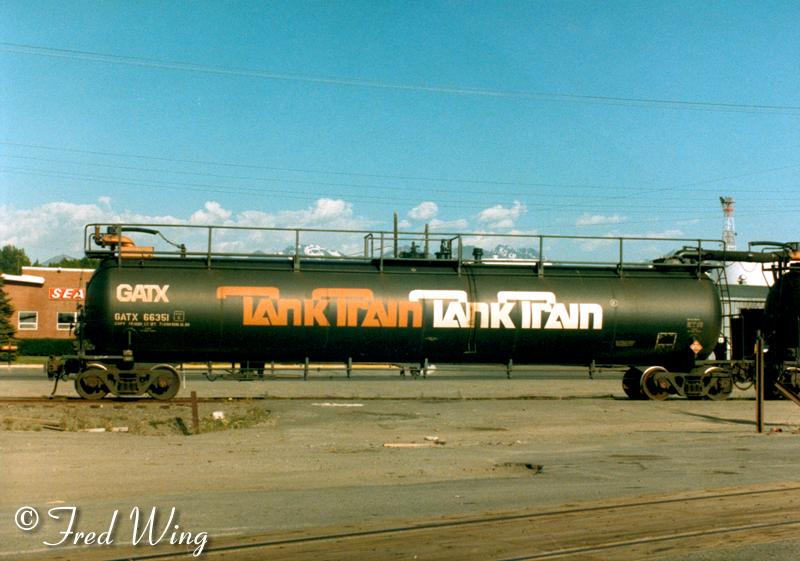
Key Features
* Single-point loading and unloading boosts safety level and lowers
costs
* Faster loading and unloading rates decrease turnaround time
* Interconnected railcars mean more effective vapor collection and
reduced chance of spillage
The TankTrain System was first tested by the Alaska Railroad. In 19??
the ARR purchased two sets of three that were linked together. They didn't
stay that way though and eventually wound up as individual cars. Some ARR
crew members felt they were more bother than they were worth. The cars
had to be kept turned in a certain direction which wasn't always operationally
easy. If one car was Bad Ordered then the whole string had to go in the
shop. The ARR ceased using them in 19?? and they were all shipped to the
lower 48. A much updated version of the TankTrain was later fielded for
the Southern Pacific "Oilcan" that went from central California, over Tehachapi
Pass, to Los Angeles. Later, the run went from Mojave to L.A.,
but was eventually retired in 1997.
Note: On 4/9/99 Eric Dillinger informed me, "Here
is what is currently going on with the Tank Train. In 1996 Unocal built
a terminal in Mojave. One train of 72 cars originates here each day. They
go to the Unocal (now Tosco) oil refinery in Carson, CA. However, in December
1998, I was there. The Tank Train cars were at the loading facility with
some
back
up cars in the Mojave Yard. The tankcars
now carry placards, 1267 -- for crude oil. Incidentally, not only are the
Tank Train cars still active, there are more now. In 1996, Mobil Oil began
shipping crude oil from San Ardo on Southern Pacific's (I still call it
SP) Coast Line to the Mobil oil refinery in Torrence, although it is unloaded
in Carson and travels by pipeline the rest of the way. The last I heard
this was a tri-weekly train of 72 cars each."
Subject: Bad news for tank train
Date: Wed, 26 May 1999 13:28:39 -0700
From: Eric A Dillinger
To: John's Alaska Railroad Web Site
According to the Bakersfield Californian, Tosco will stop sending crude
oil to its Wilmington/Carson refinery by train. The Mojave terminal will
be mothballed unless another company wants to buy it. The address of the
article is http://www.bakersfield.com/oil/i--1284459106.asp. As far as
I know, Mobil is still using the oil cans (tank train). I have never seen
anything on Mobil's web site about the oil cans. So far Tosco does not
have anything in its web site about them stopping the use of the oil cans.
Thanks to Eric Dillinger for providing me this
information!
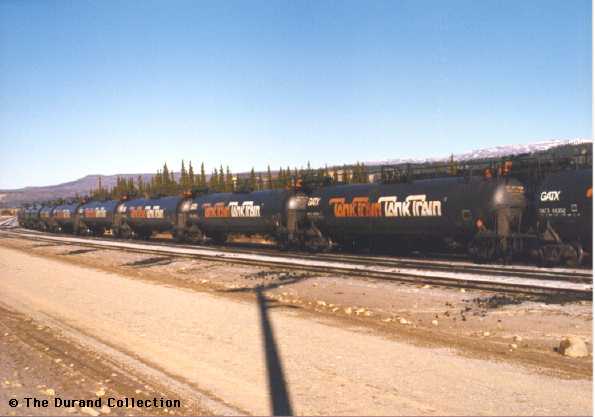
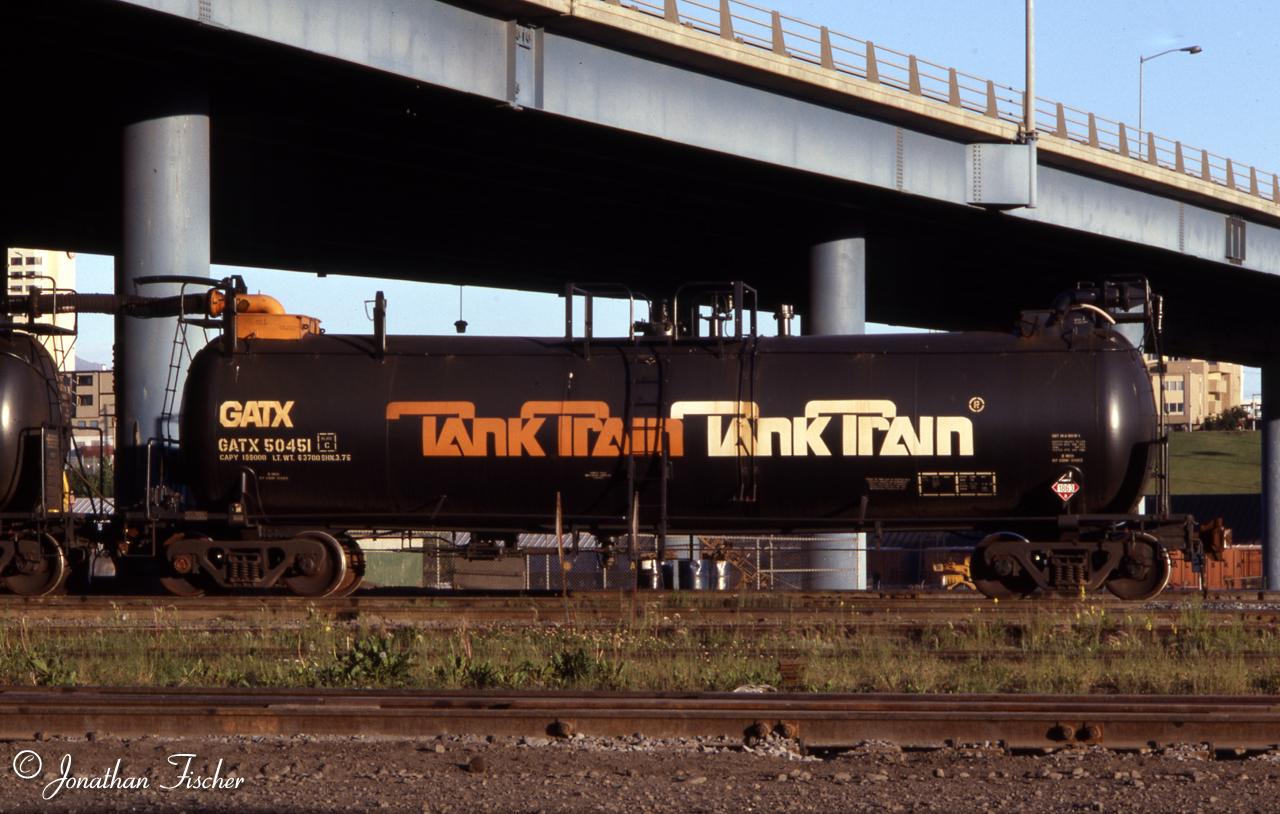
Anchorage, September 1985.
Added 3/9/10:
CN (Canadian National) is handling tank trains on a regular basis
since the late 1990's in the province of Quebec, Canada.
We run 2 unit
trains per day, each train has 68 cars, 4 string of 17 cars. One loaded train
from St-Romuald QC to Montreal-East QC, and at the same time
we run 1 empty train from Montreal-East QC to St-Romuald QC.
Above that
we also run a third train with three strings every 2 days from St-Romuald
QC to Maitland ON and return. This train actually leaves
St-Romuald
with 4 strings of 17 cars and will drop one string in Quebec City
where it will go on a regular train from Chatham NB.
The whole pattern for these 3
trains uses 15 strings of 17 cars.
Benoit Lachaine
Superviseur / Supervisor
CSCT Montréal / CTSC Montreal
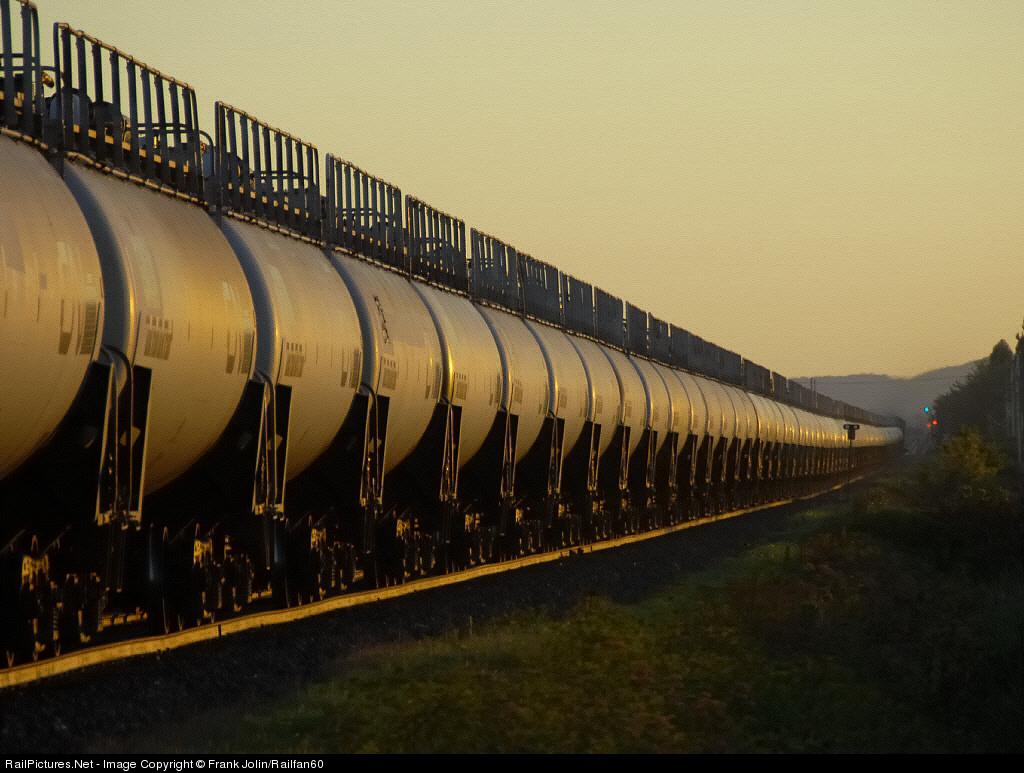
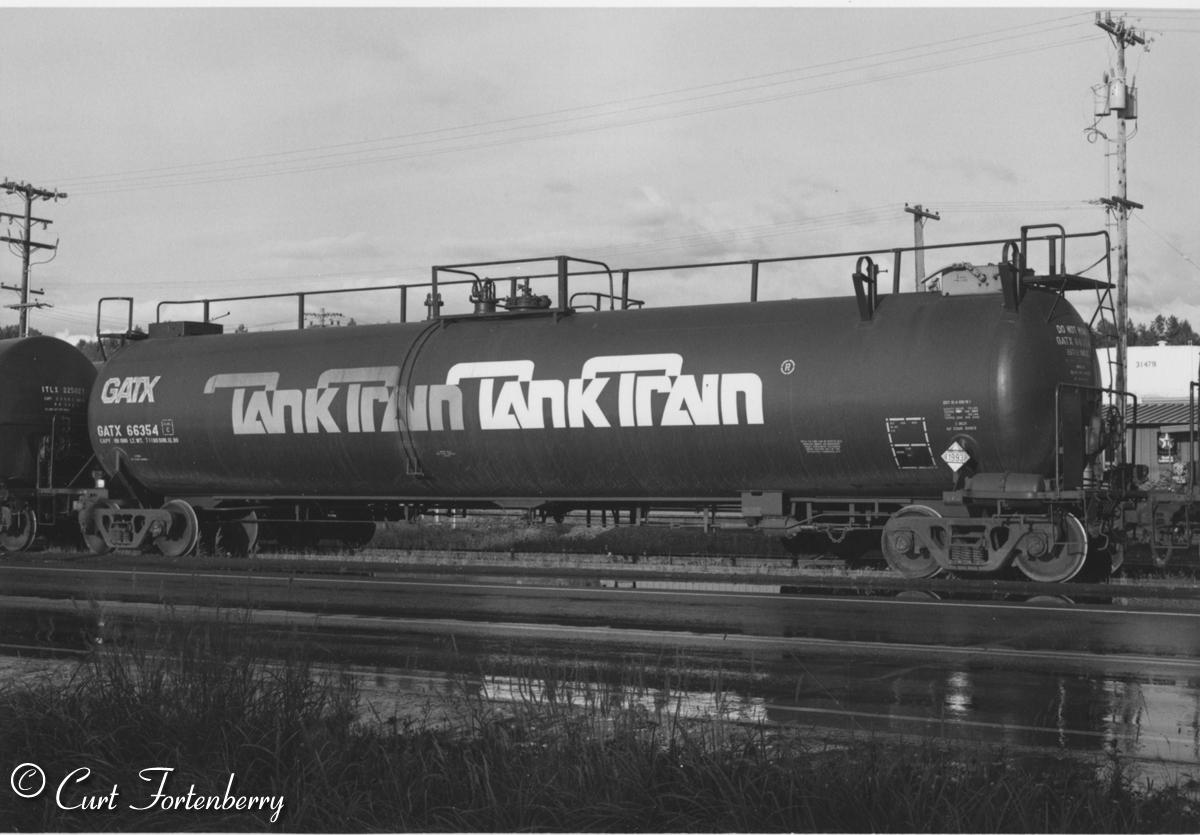
"This is a shot I took of one of the Tank Train cars in Anchorage.
I'm trying to find the negative to get the date, it'll either be mid-80's
or early 90's. I first saw these cars when I got to Alaska in 1979.
As far as I ever saw, they never used the connecting pipe."

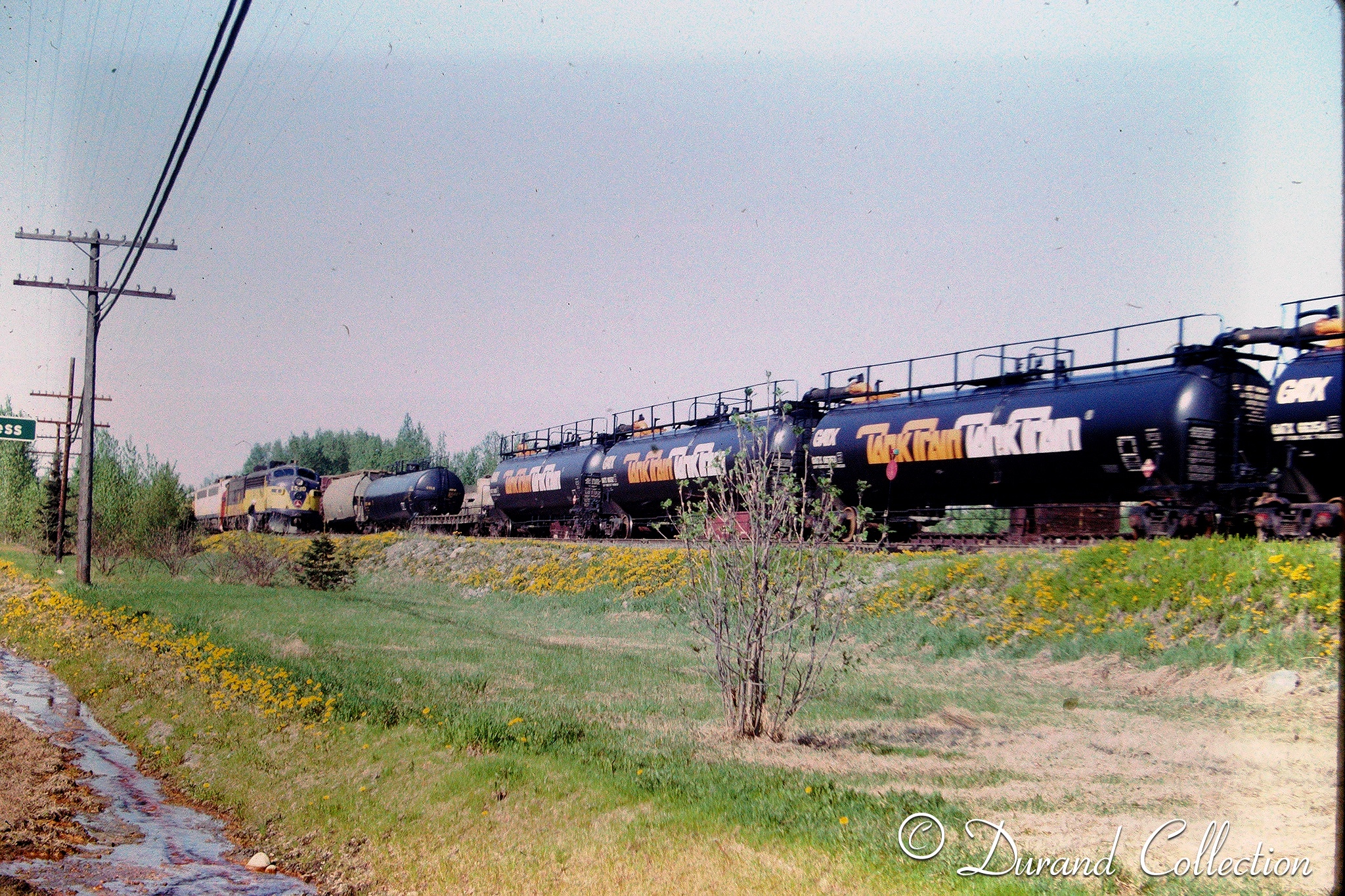
TankTrain, 1981, Durand Collection
See also:
Last updated 3/16/25
|